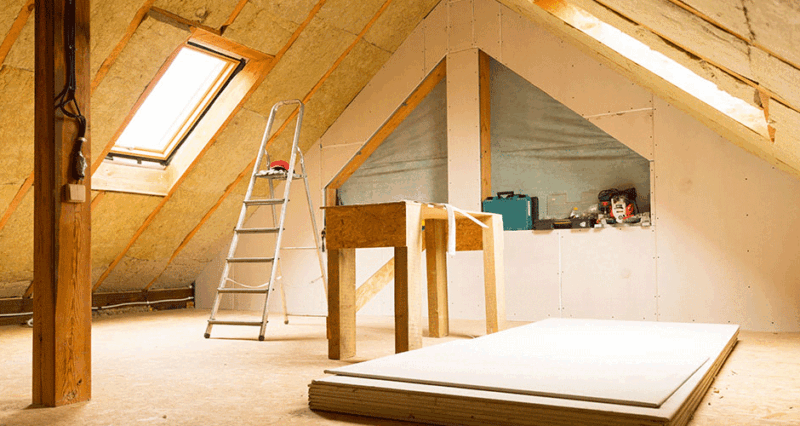
Loft insulation effectively improves your home’s energy efficiency, reduces heating bills, and maintains a comfortable indoor environment. Proper insulation can prevent heat loss but also keep your home cooler in the summer. Here’s a detailed guide on how to insulate your loft effectively.
1. Benefits of Loft Insulation
Energy Efficiency: Loft insulation significantly reduces heat loss, meaning your heating system doesn’t have to work as hard to maintain a comfortable temperature.
Environmental Impact: By reducing energy consumption, loft insulation helps lower your carbon footprint, contributing to environmental sustainability.
Comfort: Insulation helps maintain a consistent indoor temperature, ensuring your home remains comfortable throughout the year.
Cost Savings: Although there is an initial investment, the savings on heating bills over time can make loft insulation a cost-effective home improvement. There also grants around, which mean that you can reduce the cost and improve your bills with the Government’s help.
2. Types of Loft Insulation
Blanket Insulation (Rolls/Batts): This is the most common type of loft insulation, made from materials like fibreglass, mineral wool, or sheep wool. It comes in rolls that are laid between and over the joists.
Loose-Fill Insulation: Made from materials like cellulose, fibreglass, or mineral wool, loose-fill insulation is poured into the loft space and spread evenly. It’s ideal for filling irregular spaces and hard-to-reach areas.
Sheet Insulation: Rigid insulation boards made from materials like polystyrene, polyurethane, or phenolic foam. These are used for insulating the sloping sides of the roof and provide excellent thermal insulation.
Blown-Fibre Insulation: This involves blowing loose particles into the loft space using a machine. It’s suitable for hard-to-reach areas and can be installed quickly by professionals.
3. Preparation
Clear the Loft: Remove any stored items from the loft to ensure you have a clear workspace. This also prevents damage to your belongings.
Check for Gaps and Repairs: Inspect the loft for any gaps, holes, or damage that might allow air to escape or moisture to enter. Seal any gaps and repair damaged areas before installing insulation.
Measure the Area: Measure the total area of your loft to determine how much insulation material you’ll need. Ensure you buy enough to cover the entire space.
Safety Gear: Wear appropriate PPE, especially when handling fibreglass or loose-fill insulation, to protect yourself from irritation and inhalation of particles.
4. Installation Process
Blanket Insulation:
- Lay Between Joists: Start by laying the insulation between the joists. Unroll the material and cut it to fit the space snugly.
- Layer Over Joists: To achieve optimal insulation, lay another layer perpendicular to the joists, covering any gaps.
Loose-Fill Insulation:
- Spread Evenly: Pour the loose-fill insulation between the joists, spreading it evenly with a rake to ensure consistent coverage.
- Fill Gaps: Ensure that all gaps and spaces, especially around pipes and wiring, are filled with insulation.
Sheet Insulation:
- Cut to Fit: Measure and cut the insulation boards to fit between the rafters.
- Fix in Place: Secure the boards using nails or adhesive, ensuring they fit snugly against each other to prevent air gaps.
5. Blown-Fibre Insulation:
- Professional Installation: This method is usually performed by professionals who use a machine to blow the insulation into the loft space.
- Finishing Touches
Loft Hatch Insulation: Don’t forget to insulate the loft hatch. Use an insulation board cut to fit the hatch and secure it in place.
Ventilation: Ensure adequate ventilation to prevent condensation and moisture build-up, which can cause mould and dampness.
Check and Maintain: Periodically check your insulation for any signs of damage or compression and top up or replace as necessary.
Conclusion
Insulating your loft is a relatively straightforward and cost-effective way to improve your home’s energy efficiency and comfort. By choosing the right type of insulation and following proper installation techniques, you can enjoy significant savings on your energy bills and contribute to a more sustainable environment. Whether you opt for DIY installation or hire professionals, the benefits of a well-insulated loft are long-lasting and substantial.

